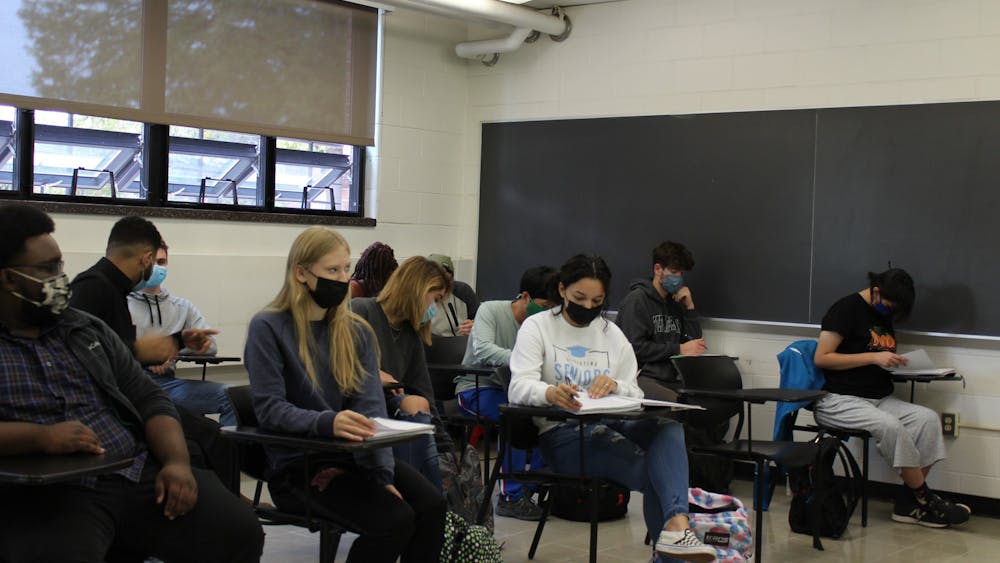Eastern Michigan University’s new high-altitude weather balloon program has recently been chosen to partake in the NASA-funded Nationwide Eclipse Ballooning Project.
The project is one of the opportunities provided by NASA’s Space Grant Consortia for students and faculty to participate in long-term projects. Led by the NASA Montana Space Grant Consortium along with more consortia, students will have the opportunity to engage in the gathering and analyzation of data through high-altitude weather ballooning during the 2023 annular solar eclipse and the 2024 total solar eclipse.
EMU Atmospheric Physics Exploration (EMU APEX), the new high-altitude weather balloon program at the university, was created by EMU Professor of Physics Dave Pawlowski and EMU Professor of Meteorology Tom Kovacs.
Over five years ago, Pawlowski taught his upper-level students how to design, build, and launch high-altitude weather balloons. However, it never evolved into a student-run organization. Following conversations with Kovacs regarding the revival of the program, Pawlowski then heard about the nationwide project in October 2022.
"It was good timing," Pawlowski said.
The application was due in November 2022, and the selections were made in December 2022. EMU APEX is now in the midst of meeting regularly with its pod, a collection of other universities in the regional northeastern and midwestern United States.
The balloon project will fully support 55 teams and encompasses two learner-centered activity tracks: engineering and atmospheric science. The EMU APEX team will be participating in the engineering track.
"I’m primarily interested in having students be a part of the design and build process, and so that was more emphasized in the engineering track," Pawlowski said. "The atmospheric science track is also very compelling, and I think that we will be able to meet some of the same goals as the atmospheric science track does, even though we’re in the engineering track."
Within the engineering route, students will be tasked with choosing the instrumentation and payloads that will be flown. Some of the capabilities required as part of the track is the ability to stream video to the NASA eclipse website during the flight, a flight termination unit, and a radio that will allow data to be transmitted to the ground station.
Currently, in Pawlowski’s physics capstone course, a basic meteorology package is being worked on.
With the goal of recruiting 15 to 20 EMU students to partake in the project, students will be selected from Pawlowski’s capstone course and Kovacs’ Introduction to Weather and Forecasting course. In addition, a connection was recently made with the EMU Diversity, Equity, and Inclusion Office to help aid in recruitment.
Students who are chosen will travel to the southeastern United States for the Oct. 14 annular solar eclipse and to either Ohio or Pennsylvania for the April 8, 2024 total solar eclipse.
"My personal opinion is that, in a project like this, there is no guarantee of success. We could go and try to launch a balloon, and a bunch of stuff could break. That puts pressure on you as a student, on me as a faculty member," Pawlowski said. "We want to see success... Knowing that this thing that you worked on for months and months may not work, I think makes it more ‘real life’ than sort of like a homework assignment or preparing for an exam... These types of projects, I think, are a really vital part of education."
Following the Nationwide Eclipse Ballooning Project, EMU APEX will become a student-run organization.
EMU student Avital Keeley is currently in the process of forming the organization, with fellow students Rosie Friend, Miles Mercier, and Hannah Popofski acting as student leaders.










